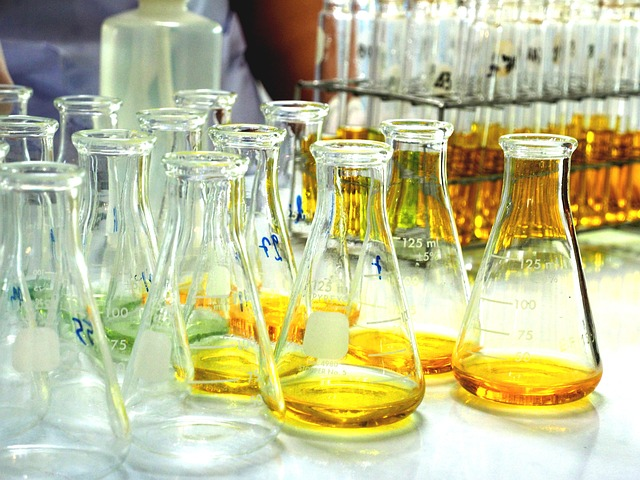The Importance of pH in Winemaking

Table of Contents
Acidity In Wine-Making
Wine acid refers to the acid levels present in wines and determines their taste. The acidity of wine includes malic acid, tartar, and citric acid. This acid causes a sour taste in wine and helps maintain its crispness and flavor balance.
Understanding pH
You may hear many winemakers speak about pH and acidity when they discuss wine quality. There are two ways to measure how acidic a wine is: pH and total acidity or titratable acidity (TA).
The pH of wine must measure the concentration of free hydrogen ions in the solution, while the TA measures the total amount of hydrogen ions. Total acidity is measured in grams per liter, and the amount of acidity in wine deserves to be a separate topic. pH indicates if a solution is acidic or a base. pH can be measured on a scale from 0 – 14, meaning 7 is neutral. The pH range of most wines is between 2.8 and 4. The closer the pH is to 3, the better. PH has to do with stability and sensory properties.

The Effects Of pH On Wine Quality
How does pH affect the taste of wine?
In wines, pH is key for longevity, meaning that the higher the pH is, the less stable the wine will be. For example, red wines are less protected against oxidation What is the best way to aerate red wine ... More at higher pH levels, the concentration of flavanols increases, and the concentration of anthocyanins decreases. This means bitterness, astringency, oxidation
What is the best way to aerate red wine ... More at higher pH levels, the concentration of flavanols increases, and the concentration of anthocyanins decreases. This means bitterness, astringency, oxidation What is the best way to aerate red wine ... More, microbiological risks, and less chemical stability, for example, in the equilibrium with sulfur dioxide, color stability, and effectiveness of bentonite.
What is the best way to aerate red wine ... More, microbiological risks, and less chemical stability, for example, in the equilibrium with sulfur dioxide, color stability, and effectiveness of bentonite.
As noted previously, pH in wines can influence their overall quality, from their aroma and flavor to their durability and shelf life. By carefully monitoring pH levels throughout the wine-making cycle, winemakers can correctly balance acidity and alkalinity, resulting in delicious and long-lasting wines!
How To Accurately Measure pH In Wine-Making?
Winemakers use a number of techniques to analyze the pH values of wines. A typical titration process involves combining with a wine to make a known amount of alcohol until it neutralizes acidity. To determine the acidity, a wine must require an adequate solution. PH is also measured via a PHmeter. It is very important to calibrate it before you use it and keep the pH meter in a stable, clean, and dry table. Usually, this is done by using 4 and 7 buffers.
In addition winemakers may choose wine acid testing kits that have all the equipment required to measure wine acid and the directions for it. We suggest that we use a pHmeter to accurately assess wine’s pH.

My advice for you
If you buy 1-litre buffer solutions, you should pour some of them into small plastic containers. In case of doubt of contamination, you should just throw away the liquid in the container and not the whole solution.
The electrode must always be clean and inside its specific liquid. Please do not let the electrode dry because you must buy another.
One very common mistake is to switch from must samples to wine samples and not clean the electrode correctly, in this particular case your data will be wrong.
Temperature is also very important. Most people forget to adjust the calibration temperature at the same temperature as the wine or must sample. Remember this because maybe you calibrate the pH meter at 20ºC / 68ºF, and your wine or must sample is at 10ºC / 50ºF. In this case, your results will be wrong.
How Does pH Change Throughout The Winemaking Process?
When grapes begin to ripen, the acid levels will start to decrease, and the pH will increase. Grapes that are too ripe will have almost no acidity, which is one of the biggest challenges in warm weather.
A good winemaker, when sampling grapes before harvest season to determine the date, will give pH the importance that it deserves. pH levels, sugar, tannins Tannins in Wine Tannins in wine are phen... More, and titratable acidity will change while the grapes start to rip and all of these factors will be taken into consideration when deciding the harvest date.
Tannins in Wine Tannins in wine are phen... More, and titratable acidity will change while the grapes start to rip and all of these factors will be taken into consideration when deciding the harvest date.
What is the best pH for winemaking?
There are different recommended ranges of pH, depending on the wine you are producing. Sweet wines less than 3.4, red wines less than 3.4, and white wines less than 3.3. Sparkling wines are usually closer to 3.2.
The majority of bacteria and fungi are unable to grow at lower pH levels (3 – 3.6). This means that if the pH levels are correct and stable, then the wine will be protected from microorganisms that may cause spoilage.
If you have pH levels closer to 3, malolactic bacteria will not survive, so this can be a very good thing for fresh, crispy young whites, but not so good if you want to do malolactic fermentation in a red wine. This is why 3.4 is a good range for a red wine.
Throughout the fermentation phases of wine, the pH changes dramatically. The wine begins at the grape itself. During the alcoholic fermentation the yeast Saccharomyces cerevisia produces ethanol and a number of other acids. Among the examples are succinic acid and acids.

What is too low pH for wine must?
A lower-pH wine tastes bitter due to higher acid concentrations. Conversely, a high pH wine may be bland and lack freshness. But remember, pH in wine is the most important factor as it significantly affects bacterial stability and spoilage risk, whereas higher pH micro organisms grow.
What is the pH of fresh wine?
Typical for wines with 3.2 – 3.6 pH ranges will fit. It seems certain wines taste better in one part of the line and in another. White wines are generally more acidic than red wines.

pH corrections
It is a key factor to adjust pH as early as possible before the fermentation process begins. pH levels should be adjusted even before the inoculation of yeasts.
There are different methods to alter pH, depending on what you need. One method may be to blend musts with lower pH levels. Perform trials on small samples before treating the whole tank. This way, you make sure to achieve the desired results.
The other method, and more common, is a chemical process.
If you have higher pH levels, you will need to acidify by adding tartaric acid to the wine. Keep in mind that adding a large amount of acid will result in the precipitation of potassium hydrogen tartrate (KHT), which are small crystals in the wine tank or bottle, and a decrease in TA. Remember that pH will increase during fermentation due to the potassium ions in the skins.
In case of increasing pH levels, the method is called deacidification, and calcium carbonate or potassium bicarbonate is usually added. This should only be done when very small adjustments may be needed. The salt that is produced can be removed during filtration. Another option will be performing a malolactic fermentation, which will precipitate the tartaric acid. This is a secondary fermentation that converts malic acid into lactic acid. This conversion increases pH.
Advantages that come with maintaining a low pH value in wine
Stop bacteria from growing
Balanced alcoholic fermentation
Control over malolactic fermentation
Protein stability (even at warm temperatures)
Effective use of bentonites
Color intensity
Lower oxidation
 What is the best way to aerate red wine ... More risks
What is the best way to aerate red wine ... More risksEffective SO2 readings and additions
Better aging process

The Last Pour
Several factors like grape variety, climate, soil, ripeness, fermentation, and aging will affect acidity and pH levels. Having the right pH levels in your wine will result in the best aroma, flavor, color, mouthfeel, and longer shelf life. Finding the equilibrium depending on the wine you are producing is easier with healthier and high-quality grapes. Do not hesitate to keep up the good work in the vineyard, and all that hard work will result in a great wine.






